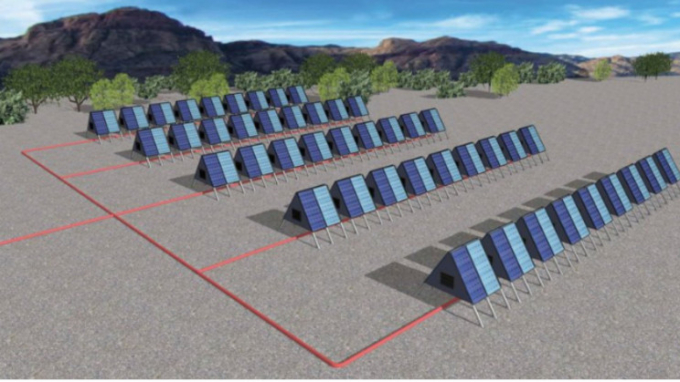May 16, 2025 | 04:13 GMT +7
May 16, 2025 | 04:13 GMT +7
Hotline: 0913.378.918
May 16, 2025 | 04:13 GMT +7
Hotline: 0913.378.918

The technology was developed by a carbon dioxide capture company called AspiraDAC, with its first customer, global financial infrastructure company Stripe, aiming to install it this year.
A solar-powered machine capable of sucking CO2 from the atmosphere could help us alleviate some of our climate woes. And good news is that it just secured a $700,000 contract to capture and store carbon in Australia, according to a press release.
The technology was developed by a carbon dioxide capture company called AspiraDAC, with its first customer, global financial infrastructure company Stripe, aiming to install it this year.
Stripe purchased the system through Frontier, a partnership between Alphabet, Shopify, Meta, and McKinsey. In case you missed it, Frontier plans to invest $925 million in carbon removal technology over the next nine years to encourage the development of carbon removal technologies.
Meanwhile, AspiraDAC will deploy roughly 180 of the machines to capture and store 500 tonnes of CO2 by 2027 at an agreed-upon $1,000 per tonne.
The world’s first solar-powered direct air capture project
The first generation product was developed in collaboration with the University of Sydney. It will be followed by a second generation unit made utilizing additive manufacturing processes.
When it comes to the engineering, the machine is built around a sponge-like substance produced at the University of Sydney that traps CO2 molecules when air travels through it. Fans suck air into sponge-filled canisters, and heat is used to extract pure CO2 that may be piped and stored underground. And the best part is that the solar panels that cover the units like an A-frame tent provide all of the power.
The company's goal for compression, transport, and storage is less than $20 per tonne CO2.
The corporation has not confirmed the site's location or geological storage, but it's known that depleting oil and gas reservoirs in Moomba, South Australia, are being considered. It's presently finalizing the project's demonstration phase and plans to begin building later this year, according to The Guardian.
“What Frontier sees in AspiraDAC is the enormous potential in the range of technology developments we are ready to scale in the carbon removal sector,” Julian Turecek, Executive Director of AspiraDAC, said, per PV Magazine. “The DAC [Direct Air Capture] solar-powered modules being delivered in this project are at the heart of the agreement with Frontier, being a global-first use of this technology.”
Australia and solar energy
While the amount of CO2 reduced under the new contract is minor, the company believes it's a significant step forward for the industry, which has big growth potential in Australia.
“Australia’s abundant solar energy potential means it is a perfect location for DAC, and with the use of solar-powered modules the facility can operate independently of traditional energy sources. Additionally, the compact nature of DAC facilities means production can capture equivalent CO2 emissions using less than 90 percent of the land needed in reforestation carbon capture projects," Turecek said.
"It is not without challenges, DAC technology is in its nascent stages, and agreements with customers such as the Frontier group will catalyze further development of the sector. This will increase our ability to bring down the costs per tonne of carbon to a competitive level to take removal to a megatonne scale within the next decade, and gigatonne scale the decade following.”
It should be noted that carbon capture technologies alone won't solve the climate crisis. The U.S. Center for International Environmental Law, for example, wrote that carbon capture is a "dangerous distraction" that could prolong the shift away from fossil fuel consumption. Still, solar-powered carbon capture machines scaled up for use on a global level may be one of many solutions that will be required to address the climate crisis.
interestingengineering

(VAN) Fourth most important food crop in peril as Latin America and Caribbean suffer from slow-onset climate disaster.

(VAN) Shifting market dynamics and the noise around new legislation has propelled Trouw Nutrition’s research around early life nutrition in poultry. Today, it continues to be a key area of research.

(VAN) India is concerned about its food security and the livelihoods of its farmers if more US food imports are allowed.

(VAN) FAO's Director-General emphasises the need to work together to transform agrifood systems.

(VAN) Europe is facing its worst outbreak of foot-and-mouth since the start of the century.

(VAN) The central authorities, in early April, released a 10-year plan for rural vitalization.

(VAN) Viterra marked a significant milestone in its carbon measurement program in Argentina, called Ígaris, reaching 1 million soybean hectares measured.